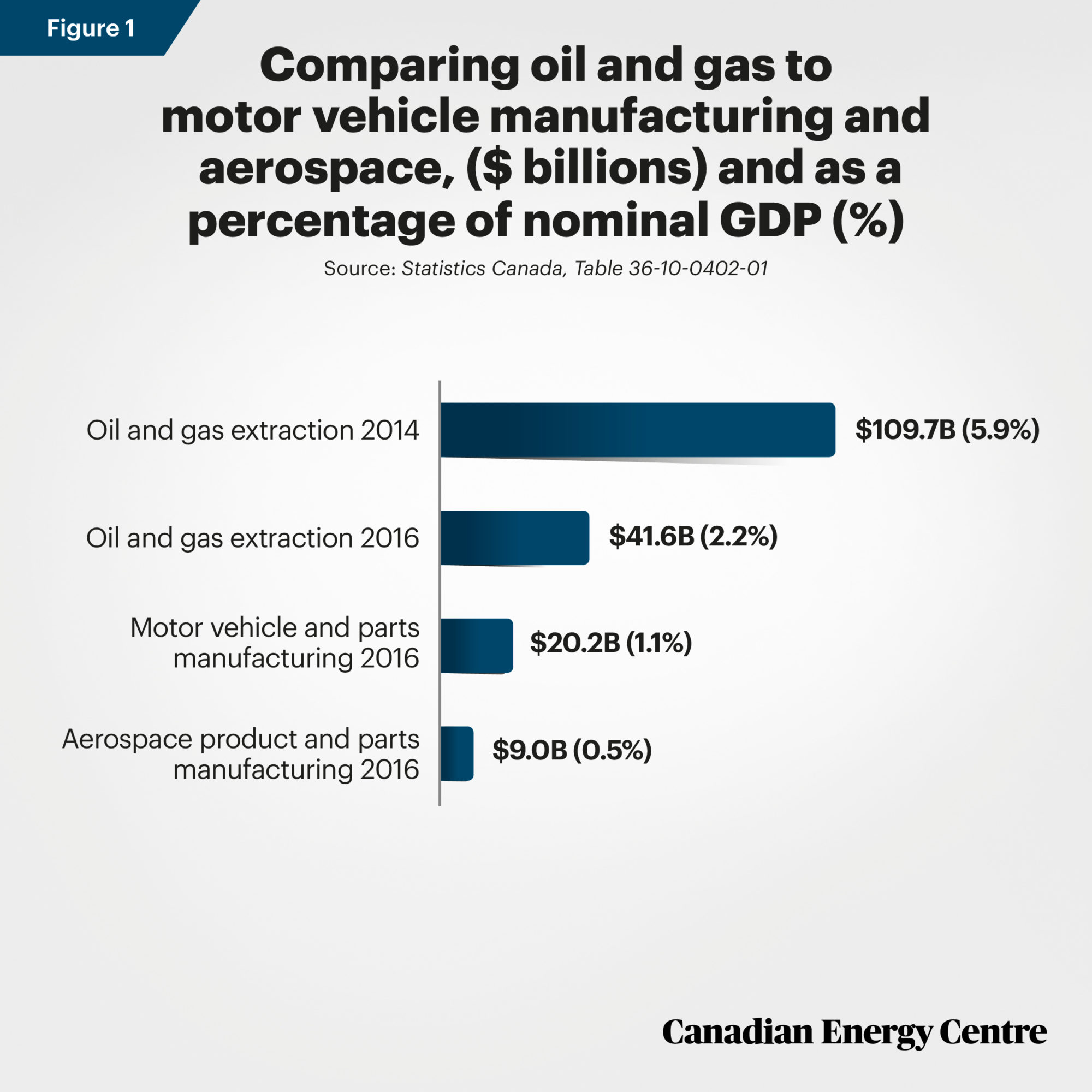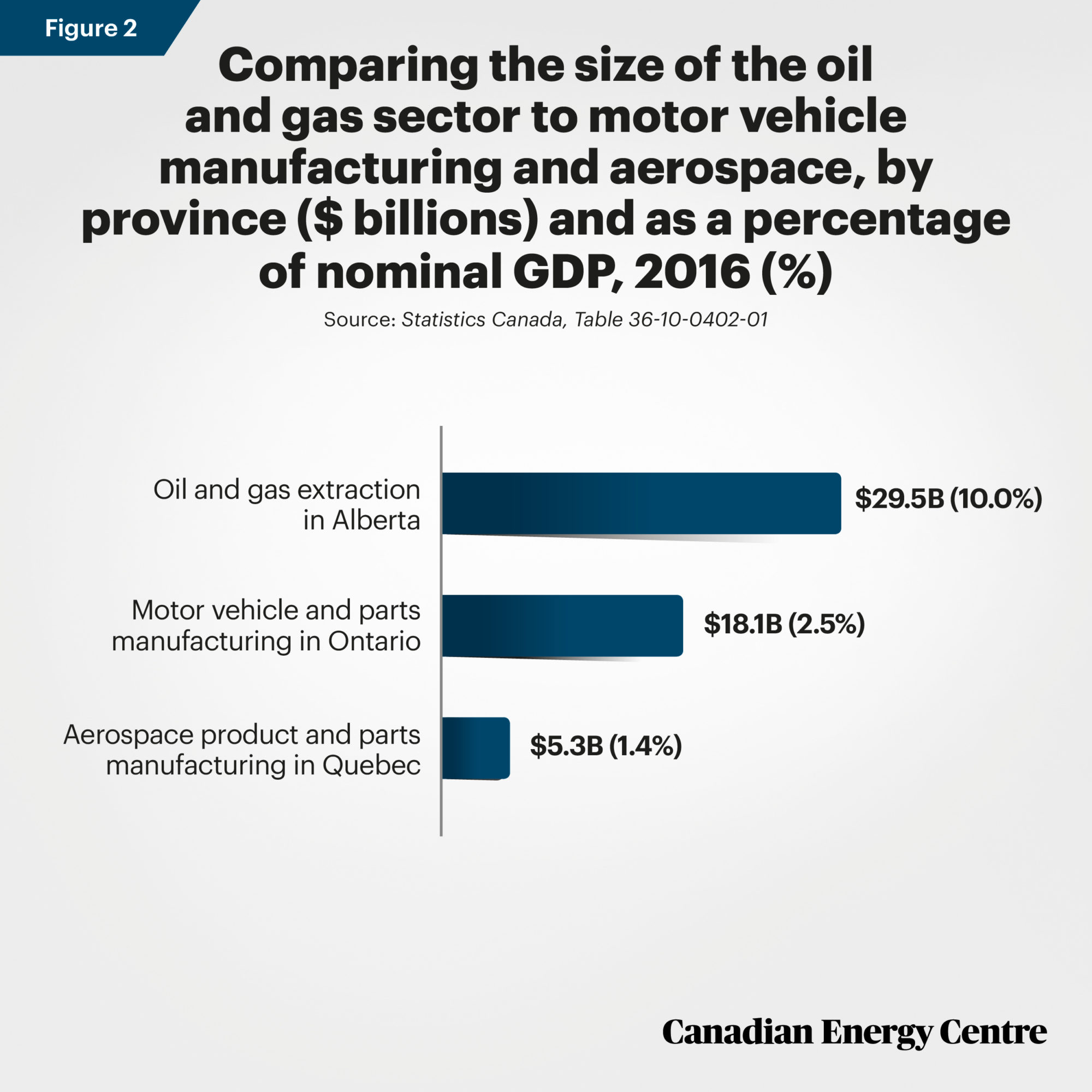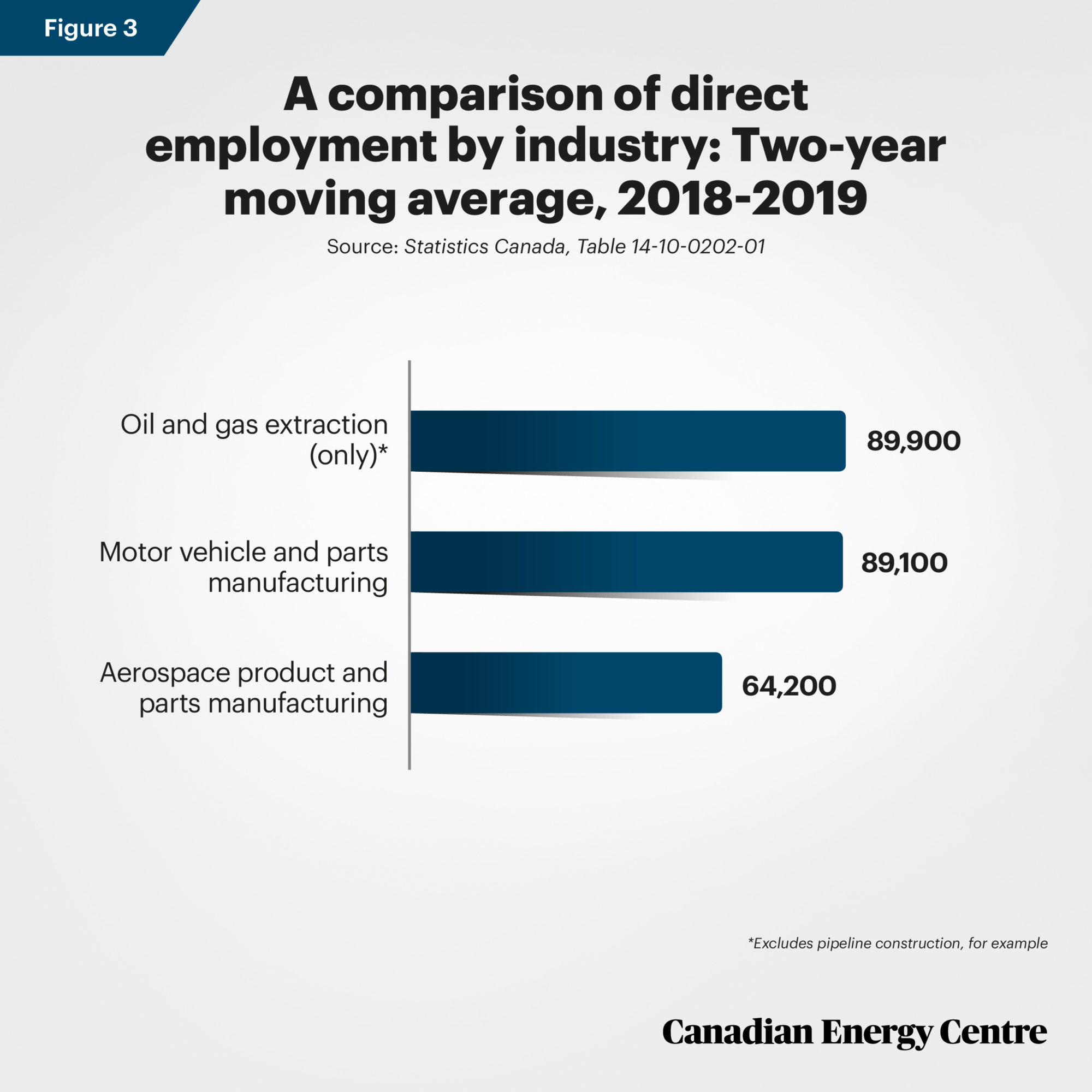Published by Mark Milke and Lennie Kaplan
Follow CEC on Linkedin CEC Linkedin
Follow CEC on Facebook CEC Facebook
Follow CEC on Twitter CEC Twitter

Photograph courtesy TC Energy
This Fact Sheet compares Canada’s oil and gas extraction sector (narrowly defined to include conventional oil and gas and oil sands) with the automotive and aerospace sectors on national and provincial GDP (in billions of dollars and as a percentage of GDP) and employment.
In addition, it looks at employment in the broader energy sector.
The Statistics Canada economic data enable us to provide an “apples-to-apples” comparison between oil and gas extraction in both 2014 and 2016 with motor vehicle and parts manufacturing, and aerospace products and parts manufacturing. The Statistics Canada and Natural Resources Canada estimates on employment in the broader energy industry are stand-alone estimates; neither agency has conducted a comparison with the broader automobile and aerospace sectors. (The entire fact sheet can be viewed and downloaded here.)
GDP: Figures 1 and 2
- In 2014, the oil and gas extraction sector accounted for $109.7 billion or 5.9 percent of Canada’s nominal GDP. Even with the decline in the world crude oil price, in 2016 the oil and gas extraction sector still accounted for $41.6 billion or 2.2 percent of Canada’s nominal GDP.
- By contrast, in 2016 the motor vehicle and parts manufacturing sector accounted for $20.2 billion or 1.1 percent of Canada’s nominal GDP, while the aerospace product and parts manufacturing sector accounted for $9 billion or 0.5 percent of Canada’s nominal GDP.
- In 2016, the oil and gas extraction sector accounted for $29.5 billion or 10 percent of Alberta’s nominal GDP. By contrast, in that same year the motor vehicle and parts manufacturing sector accounted for $18.1 billion or 2.5 percent of Ontario’s nominal GDP, while the aerospace product and parts manufacturing sector accounted for $5.3 billion or 1.4 percent of Quebec’s nominal GDP.


Comparing employment in oil and gas extraction with motor vehicle and aerospace manufacturing: Figure 3
- For 2018-2019, Statistics Canada estimated that the moving two-year average employment in the oil and gas extraction sector only (i.e., excluding pipelines and other oil and gas activity) was 89,900 people, while the motor vehicle and parts manufacturing sector employed 89,100 Canadians, and the aerospace product and parts manufacturing sector employed 64,200 Canadians.

Energy industry employment estimates: Figure 4
- In a 2016 Statistics Canada analysis, the oil and gas sector (defined as oil and gas extraction and oil and gas investment) directly employed 202,171 Canadians and indirectly employed another 338,446. Combined, the sector employed 540,617 people in Canada that year.
- A Natural Resources Canada analysis of employment in the broader energy sector (i.e., including coal, utilities, and pipelines), indicates that in 2018, Canada’s energy sector directly employed more than 269,000 people and indirectly supported over 550,500 jobs. Employment in the sector thus totaled 819,500 jobs in 2018.
- In the same analysis, Natural Resources Canada estimated direct energy employment at 143,019 people in Alberta, followed by 41,527 in Ontario, 27,455 in Quebec, 21,478 in British Columbia, and 17,334 in Saskatchewan with lower employment levels in other provinces

Average weekly earnings are 172 percent higher in oil and gas than industry average: Figure 5
Those Canadians in the oil and gas extraction sector earn high incomes relative to other industries in Canada. For example, in 2018, average weekly earnings by industry were:
- $1,025 in motor vehicle parts manufacturing;
- $1,435 in aerospace product and parts manufacturing;
- $2,727 in oil and gas extraction.
The average for all industries in Canada in 2018 was $1,001 in weekly earnings. When compared with the average across industries, average weekly earnings were:
- slightly higher in motor vehicle parts manufacturing (by 2
percent); - much higher in aerospace product and parts manufacturing
(by 43 percent); - significantly higher in the oil and gas extraction industry (by
172 percent).

Notes
This CEC Fact Sheet was compiled by Mark Milke and Lennie Kaplan at the Canadian Energy Centre: www.canadianenergycentre.ca. The authors and the Canadian Energy Centre would like to thank and acknowledge the assistance of Mr. Philip Cross in reviewing the data and research for this Fact Sheet.
Sources (Links live as of March 26, 2020)
Natural Resources Canada. Energy and the Economy. <https://bit.ly/2JhZFpx>.; Statistics Canada. Tables 38-10-0285-01, 36-10-0214-01, 36-10-0489-01, 36- 10-0480-01, 36-10-0221-01, 36-10-0400-01, 14-10-0202-01, and 14 10 0023 01. <https://bit.ly/3btn6YT>.
About the Canadian Energy Centre (CEC)
The Canadian Energy Centre (CEC) is an independent provincial corporation that is primarily supported by the Government of Alberta’s industry-funded Technology, Innovation and Emissions Reduction (TIER) fund. The CEC’s mandate is to promote Canada as the supplier of choice for the world’s growing demand for responsibly produced energy. At its core, the CEC will also create a new, pragmatic, fact-based narrative about Canadian energy.
Visit the Canadian Energy Centre website
Share This:





 CDN NEWS |
CDN NEWS |  US NEWS
US NEWS 






























Canada’s Advantage as the World’s Demand for Plastic Continues to Grow